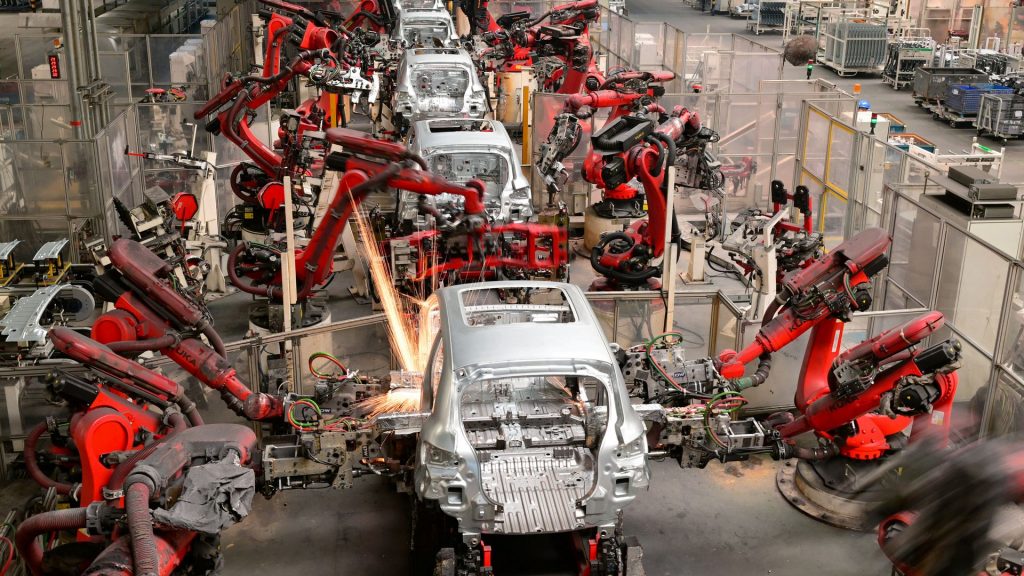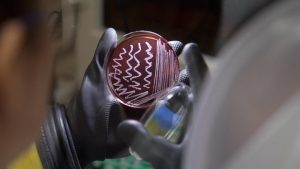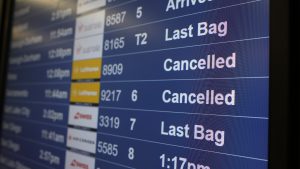Hyundai’s US factory employs robots and humans — and skirts tariffs too

While President Donald Trump pressures companies like Apple to make iPhones in the U.S. or face steep import tariffs, one global manufacturer is already ahead of the curve. Hyundai, the South Korean automaker, celebrated the grand opening of its new factory in Bryan County, Georgia, designed to build the future of electric vehicles in America.
Construction on the $7.6 billion “megafactory” began in October 2022, long before Trump started his second term. It was built primarily to increase its EV production capacity in the U.S. and to “meet growing demand for electric vehicles in the market.” It also represented Hyundai’s largest investment in the U.S. to date.
Although Hyundai planned and built the plant before the U.S. announced tariffs on imported cars, the new location now allows the company to avoid those tariffs entirely.
The factory officially began production in late 2024, rolling out Hyundai’s Ioniq 5 and Ioniq 9 EVs. Because Hyundai manufactures these vehicles in the U.S., it completely avoids tariffs, giving the company a pricing edge over foreign-made competitors.
In March 2025, when the company announced plans to expand production, Trump praised the automaker, saying its American investments are “a clear demonstration that tariffs very strongly work.”
Hyundai said the plant will eventually employ 8,500 people in high-paying, skilled roles. The jobs aren’t unionized, but the pay is good, and it’s the kind of foreign investment in U.S. manufacturing that Trump has long called for.
Robots working alongside humans
However, there’s a catch. Much of the factory’s efficiency and long-term cost savings come from non-human workers. The plant will rely on 850 robots to assist with tasks ranging from sorting parts and transporting heavy materials to even supporting assembly.
Unbiased. Straight Facts.TM
South Korea, Hyundai’s home country, has a significant number of robots in operation, with 1,012 robots per 10,000 employees, making it the world leader in robotic workforce adoption.

“These robots don’t take lunch breaks, they don’t demand overtime, and they don’t get injured. They deliver parts to the right place at the right time, removing human error and delay,” Jerry Roach, Hyundai’s senior manager of general assembly, told The Verge.
Roach insists that the goal isn’t to replace people but to reassign them to more skilled, less physically demanding work.
“I want my people doing craftsmanship,” he said. “Let the machines handle the heavy lifting and repetitive tasks. That’s where they shine.”
Boston Dynamics developed the robots to handle tasks that are too dangerous or too repetitive for human workers. While Hyundai insists that the 8,500 jobs it promised are safe, experts say more of the work could shift to machines over time.
Lawrence Ulrich, writing in The Verge, notes that companies competing with China’s fast-moving EV industry will likely lean even harder on automation.
“To compete, factories must enlist growing armies of AI-enhanced robots that can potentially work 24/7 and never demand overtime or benefits. That means employing relatively fewer humans,” he wrote.
Will robots supplant human workers?
In China, manufacturers increasingly use humanoid robots in EV production, assigning them tasks ranging from assembly to quality control. While some officials — like Liang Liang of the Beijing Economic-Technological Development Area — insist that robots are meant to assist, not replace, human workers, that distinction may become blurrier as the technology improves.
“We don’t believe robots will make people unemployed,” Liang told Reuters. “They’ll boost efficiency or take on tasks humans are unwilling to do, like back-breaking labor or work in dangerous environments.”
Hyundai already utilizes robots in its South Korean factories, and to date, there have been no reports of widespread job losses.





